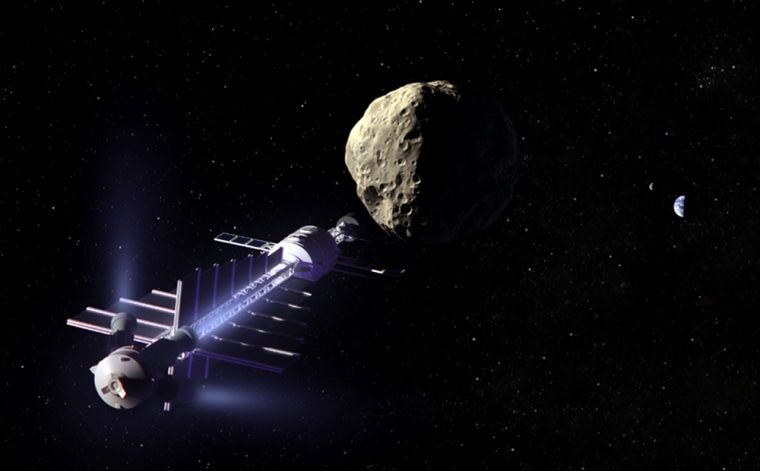An asteroid the size of two football fields could wipe out a large city or set off a series of tsunamis across the world. The threat of such an Earth-smashing asteroid has led scientists to dream up several methods of defending the planet against such a catastrophe.
Solutions have ranged from pushing the asteroid with a spacecraft, to mounting a thruster on its surface. But pushing it would require too much fuel and could break up the asteroid. Also, asteroids rotate, which could complicate the firing of a surface thruster.
Now, two NASA astronauts have presented a plan for an “asteroid tractor” — an unmanned, 20-ton spacecraft that uses the invisible bond of gravity to pull an asteroid gently into a new, non-threatening orbit.
“You can think of it like a big elastic band between the two, pulling them together,” said Edward Lu, who presents the concept for the spacecraft with fellow astronaut Stanley Love in Thursday's issue of the journal Nature.
The tractor would hover above the surface of the asteroid, without touching it, and use gravity as a towline. If the spacecraft stays at a consistent distance from the asteroid, and always exerts a gravitational pull in the same direction, this method won’t disturb the asteroid’s rotation or composition.
Despite the urge to give the asteroid a hardy tug, the key to moving an asteroid with gravity is to be gentle. An asteroid is likely to be loosely packed material, so tugging on it too hard could break it into unmanageable pieces. Or, the force from the spacecraft’s thrusters could break up the asteroid or stir up unwanted dust if fired too vigorously.
To make sure the thrusters couldn’t break up the asteroid — or hinder the net towing force by pushing the asteroid away — Lu and Love angled the thrusters slightly away from the body of the spacecraft.
“The jets fire off to the side, not quite as efficient as firing straight down. It’s like rowing forward by pushing off to the sides — it keeps you moving forward, but very slowly,” Lu told Space.com. “It takes less than a pound of force — about what you need to hold up a cup of coffee.”
In 2029, the 1,000-foot (320-meter) asteroid 99942 Apophis (2004 MN4) will whiz by Earth at a distance of about 18,600 miles (30,000 kilometers). That’s about as close as many geosynchronous satellites. It will swing by Earth again in either 2035 or 2036, and scientists predict it has a small chance of hitting the planet on this pass.
“The kind of spacecraft we’ve talked about could move an asteroid 650 feet (200 meters) across, provided we have decades of advanced warning,” Lu said. “That’s not out of line with what you’d expect — we can predict the orbit of an asteroid decades in advance.”
